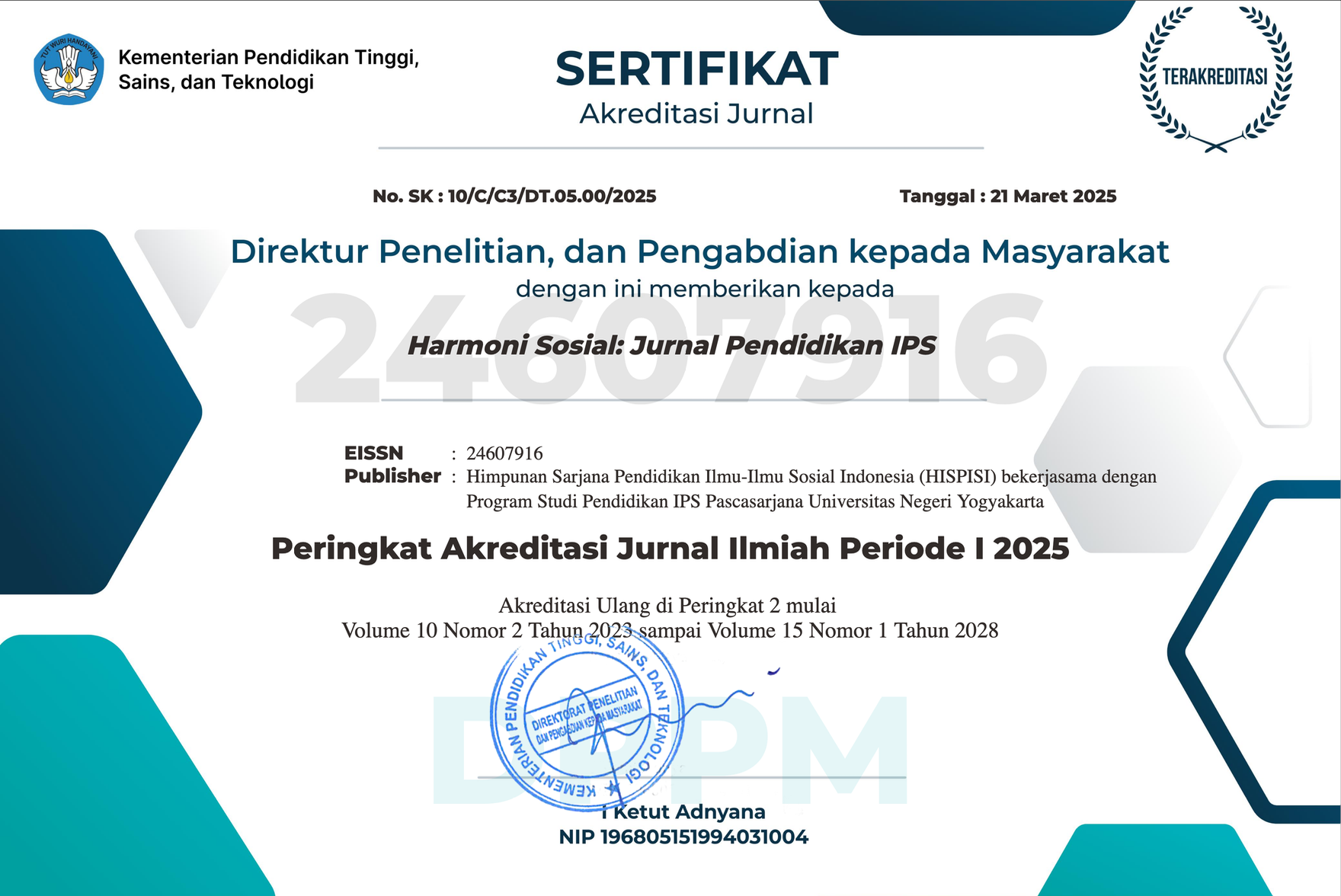The effectiveness of the problem-based learning model assisted by stop-motion animation videos in improving the critical thinking abilities of elementary school students
Downloads
Downloads
Abidin, Y. (2016). Desain sistem pembelajaran dalam konteks kurikulum 2013 (A. Gunarsa (ed.)). Refika Aditama.
Apriana, A. (2016). Penggunaan media stopmotion untuk menumbuhkan motivasi belajar siswa dalam pembelajaran sejarah (penelitian tindakan kelas di kelas XI IPS 1 SMA Negeri 2 Cimahi) [Universitas Pendidikan Indonesia]. https://123dok.com/document/z3n566eq-penggunaan-stopmotion-menumbuhkan-motivasi-belajar-pembelajaran-sejarah-repository.html#google_vignette
Arif, D. S. F., Zaenuri, Z., & Cahyono, A. N. (2019). Analisis Kemampuan Berpikir Kritis Matematis Pada Model Problem Based Learning ( PBL ) Berbantu Media Pembelajaran Interaktif dan Google Classroom. Prosiding Seminar Nasional Pascasarjana UNNES, 323–328. https://proceeding.unnes.ac.id/index.php/snpasca/article/download/594/512
Ennis, R. H. (1991). Goals for a Critical Thinking. Illinois Critical Thinking Project. University Illinois.
Facione, P. (1990). Critical thinking: A statement of expert consensus for purposes of educational assessment and instruction (The Delphi Report). https://philarchive.org/archive/faccta
Fisher, A. (2008). Berpikir kritis : Sebuah pengantar (G. Sagara (ed.); B. Hadinata (trans.)). Erlangga.
Ibrahim, M., & Nur, M. (2000). Pembelajaran Berdasarkan Masalah (Problem Based Learning). Unesa University Press.
Lestari, D. D., Ansori, I., & Karyadi, B. (2017). Penerapan model PBM untuk meningkatkan kinerja dan kemampuan berpikir kritis siswa SMA. Diklabio: Jurnal Pendidikan Dan Pembelajaran Biologi, 1(1), 45–53. https://doi.org/10.33369/diklabio.1.1.45-53
Lestari, K. E., & Yudhanegara, M. R. (2018). Penelitian pendidikan matematika : Panduan praktis menyusun skripsi, tesis, dan laporan penelitian dengan pendekatan kuantitatif, kualitatif, dan kombinasi disertasi dengan model pembelajaran dan kemampuan matematis (A. Anna (ed.)). Refika Aditama.
Mahfudah, S., Susatyo, A., & Widyaningrum, A. (2019). Keefektifan model problem based learning terhadap kemampuan berpikir kritis tema panas dan perpindahannya. Thinking Skills and Creativity Journal, 2(1), 11–18. https://doi.org/10.23887/tscj.v2i1.18378
Pangestu, A. R., Purwanto, A., & Rosanti, R. (2021). Pengembangan media pembelajaran berbasis video animasi stop motion pada mata pelajaran geografi. Geodika: Jurnal Kajian Ilmu Dan Pendidikan Geografi, 5(2), 216–225. https://doi.org/10.29408/geodika.v5i2.3807
Prayoga, A., & Setyaningtyas, E. W. (2021). Keefektifan model pembelajaran problem based learning dan problem solving terhadap kemampuan berpikir kritis matematika siswa kelas V. Jurnal Cendekia : Jurnal Pendidikan Matematika, 5(3), 2652–2665. https://doi.org/10.31004/cendekia.v5i3.938
Priyatno, D. (2017). Panduan praktis olah data menggunakan SPSS. Andi.
Rahmadani, L., Fadilah, M., & Darussyamsu, R. (2022). Pengembangan video pembelajaran animasi berbasis problem based learning pada mata pelajaran matematika. Journal on Teacher Education, 3(3), 381–387. https://journal.universitaspahlawan.ac.id/index.php/jote/article/view/4867
Riduwan, R. (2008). Skala pengukuran variabel-variabel penelitian. Alfabeta.
Samadun, S., & Dwikoranto, D. (2022). Improvement of student's critical thinking ability sin physics materials through the application of problem-based learning. IJORER : International Journal of Recent Educational Research, 3(5), 534–545. https://doi.org/10.46245/ijorer.v3i5.247
Shoimin, A. (2014). 68 model pembelajaran inovatif dalam kurikulum 2013. Ar-Ruzz Media.
Sianturi, A., Sipayung, T. N., & Simorangkir, F. M. A. (2018). Pengaruh model Problem Based Learning (PBL) terhadap kemampuan berpikir kritis matematis siswa SMPN 5 Sumbul. UNION: Jurnal Ilmiah Pendidikan Matematika, 6(1), 29–42. https://doi.org/10.30738/.v6i1.2082
Simbolon, M., Surya, E., & Syahputra, E. (2017). The efforts to improving the mathematical critical thinking student's ability through problem solving learning strategy by using Macromedia Flash. American Journal of Educational Research, 5(7), 725–731. https://www.academia.edu/download/56097516/education-5-7-5.pdf
Sugiyono, S. (2016). Statistika untuk penelitian (A. Nuryanto (ed.)). Alfabeta.
Sumantri, M. S. (2015). Strategi pembelajaran. RajaGrafindo Persada.
Syakur, N. (2009). Basis transfer belajar untuk pembelajaran PAI. Jurnal PAI, 6(1), 101–118. https://digilib.uin-suka.ac.id/id/eprint/8729/
Trianto, T. (2010). Model pembelajaran terpadu : Konsep, strategi, dan implementasinya dalam kurikulum tingkat satuan pendidikan (KTSP). Bumi Aksara.
The Authors submitting a manuscript do so on the understanding that if accepted for publication, copyright publishing of the article shall be assigned to Harmoni Sosial: Jurnal Pendidikan IPS
 | Harmoni Sosial: Jurnal Pendidikan IPS by http://journal.uny.ac.id/index.php/hsjpi is licensed under a Creative Commons Attribution-ShareAlike 4.0 International License. |











 ISSN Print
ISSN Print









